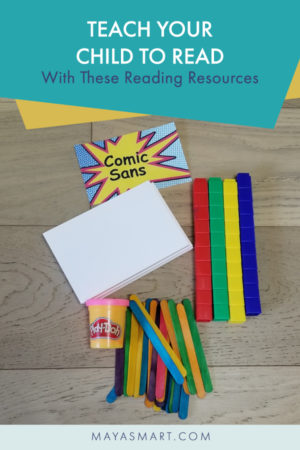“How do I teach my child to read?”
This is the number one question teachers hear from parents. They often feel lost or ill equipped to teach reading. But while there are incredible pre-designed resources out there, the truth is that you can totally do this on your own!
Many of the best tools for helping kids learn to read are simple, inexpensive, easy to find, reusable, and adaptable in a myriad of ways. You may already have some of them around the house (though you might not associate them with reading). If not, they’re easy to pick up or order online. Here’s our checklist of educator-recommended items for your toolbox, so you can infuse your child’s days with playful learning.
(And if you need a little motivation, be sure to check out our post on four reasons why parents should learn to teach reading immediately.)
- Craft Sticks
- Playdough
- Stacking Blocks
- Index Cards
- Letter Tiles or Magnets
- Comic Sans
- Clear Sheet Protectors/Contact Paper
- Sidewalk Chalk
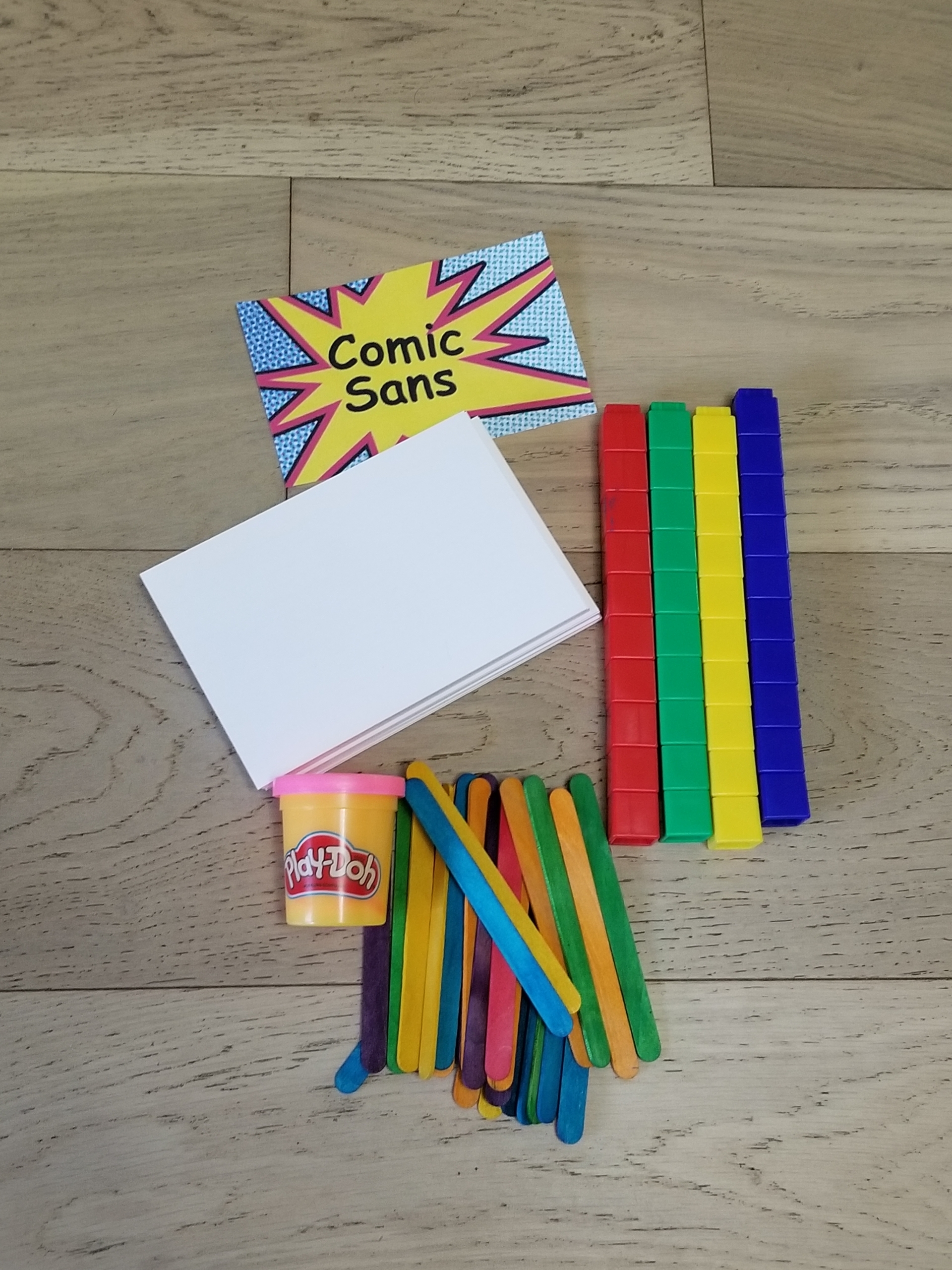
Craft Sticks
Craft sticks are the BEST. They are inexpensive, easy to find, and adaptable in a myriad of ways.
For example: You can use them to teach children the shapes of letters (click the link to learn how). They can be held under text in a book to help guide readers and keep their place or you can turn them into an easy DIY reading tool that highlights the words as they read. You can write letters on the end and swap them around to create words for your child to read, allowing them to practice letter swapping.
In my classroom, we write simple three-letter words on one side. My students read the word, flip the stick over, and then turn the stick into an illustration of that word. Popsicle-stick cats, dogs, moms, suns, and pigs abound!

Playdough
You can always use playdough to teach children the shapes of letters, particularly letters that contain curves. Children can use cutting toys or alphabet cookie cutters to create entire words.
Other times, I write down a letter and ask a child to use the playdough to create something that begins with that letter. For children who are starting to read words, I’ll write down a word and ask the child to read the word, then make a playdough sculpture of that word.
Sometimes I create a phonics sensory experience. If we’re learning the letter C, I’ll pull out toy cars and let the kids play with cars and playdough. We might create homes for the cars or make car tracks on playdough roads. As we play, I bring up the sound of the target letter or ask questions about other words that start with that sound. It’s play infused with phonics at its most simple and subtle.
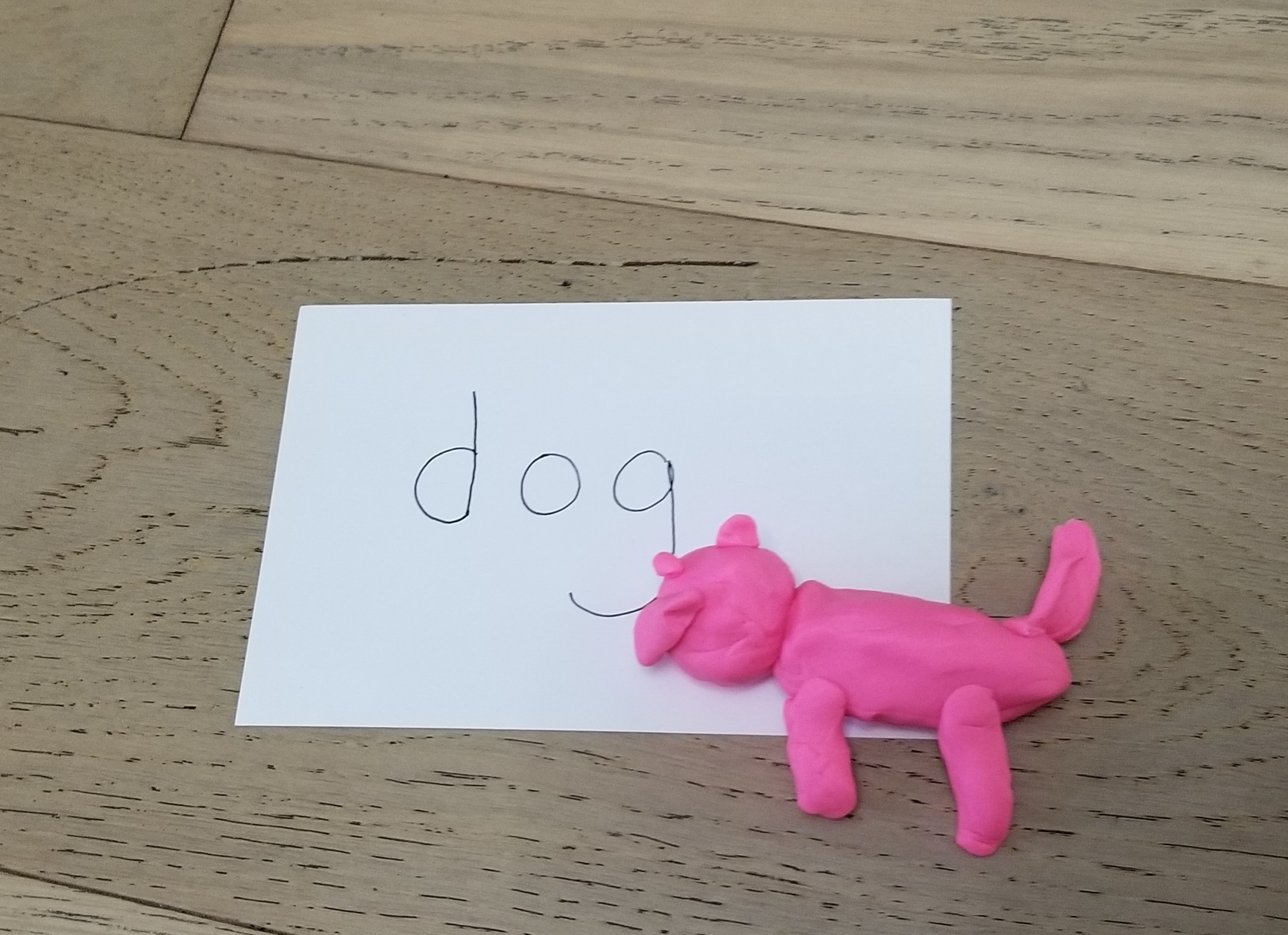
Stacking Blocks
Stacking blocks are ones that can connect to one another, like Legos, Mega Bloks, or Unifix cubes. I use these blocks to build reading skills by taping letters to the blocks and connecting them together to create words (whether horizontally or by building a tower that reads vertically).
This mirrors the way teachers and parents have used wooden blocks for over 100 years, but with the added benefit that the letters stay together and we can manipulate the words once we’ve made them.
You can use alphabet stacking blocks in any number of creative ways. One adaptation I like is to tape the letters of a child’s name to the blocks and have them stack those together. With another set of blocks, we create a second person’s name. If you do this activity at home, spell the names of every family member and some friends or neighbors too. Then help kids identify which names start with the same letter or which have a certain letter in their name.
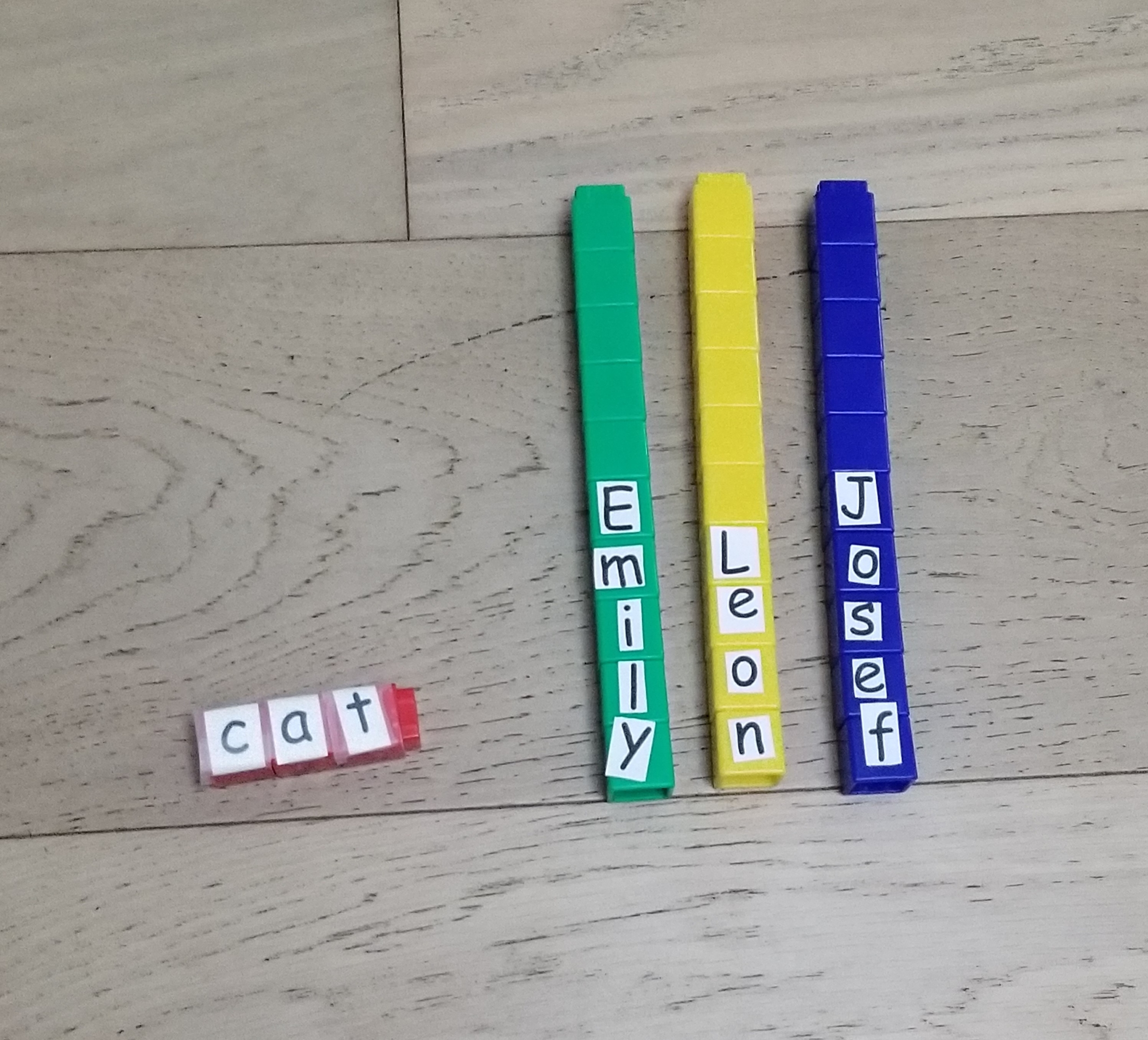
Index Cards
Index cards are so useful and probably have the most versatility. You can ditch the overpriced store-bought flash cards and make your own homemade ones instead, to practice letter sounds, sight words, new vocabulary, spelling words, etc.
Or write individual letters on the cards. Combine the letters to practice spelling and reading, like we’ve done in the activities above, or stick them to things around the house that begin with that letter.
You can also make all kinds of DIY educational games with index cards, from Alphabet Game of War to Rhyming Go Fish and DIY storytelling cards.
Finally, you can ask your child to practice writing on them. (A great example is in our Lunar New Year post.) For some reason, kids just love writing and illustrating on these sturdy, pint-sized papers. Then hang their writing on the fridge! I love, love, love a good index card.
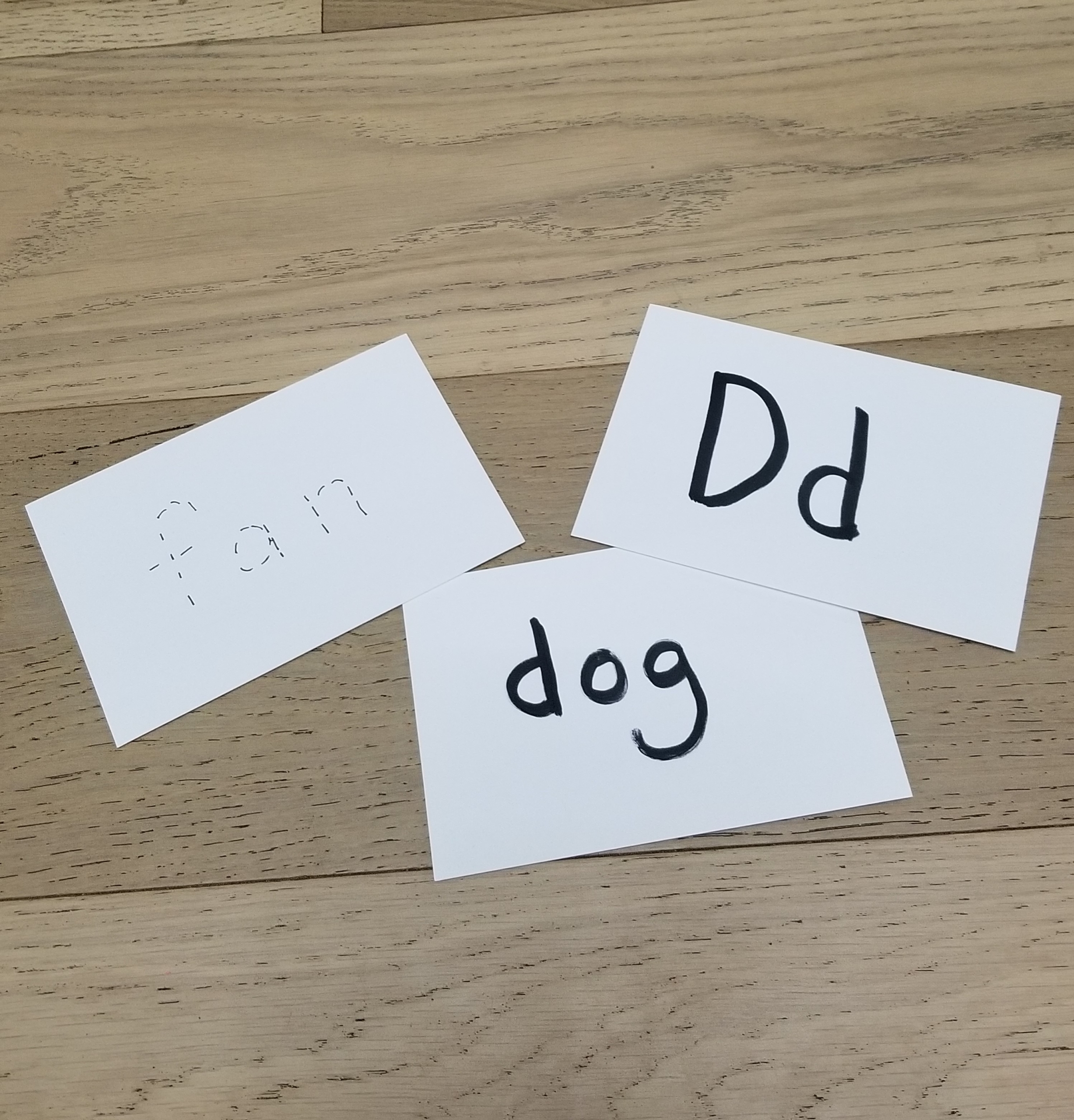
Letter Tiles
Letter tiles are durable, versatile, and regiftable. You can grab them from board games like Scrabble, Bananagrams, or Gnu, or purchase a whole bucket for as little as $6. After all the ideas I’ve shared above, I know you’ll find plenty of creative ways to teach reading with these cute little tiles. (Feel free to share other ideas you come up with in the comments!)
And you can hang on to these sturdy tiles for years to come. Use them to reinforce spelling skills (an easily overlooked skill that parents really should teach at home — see our post on four things parents need to know about spelling for more info) as your child blossoms from budding reader to bonafide bibliophile.
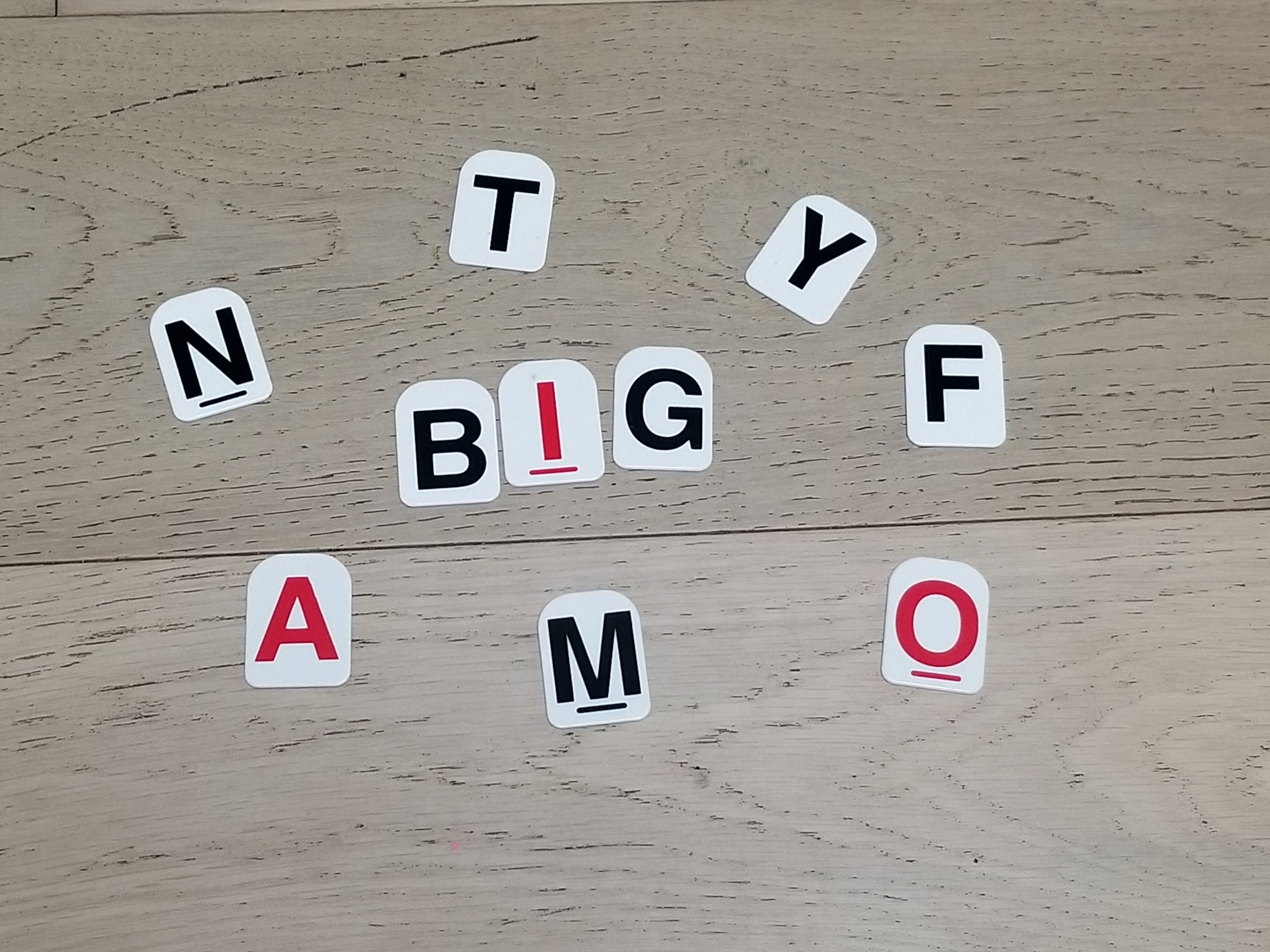
Comic Sans
This font gets a bad rap, but it was actually created with children in mind. It was made so children could read it more easily.
Take a look: The letters are probably pretty similar to how you write, unlike other fonts that can be confusing with their hooded lower-case A’s or closed-loop G’s. If you print words for your kids, or let them type on your computer, set that font to Comic Sans.
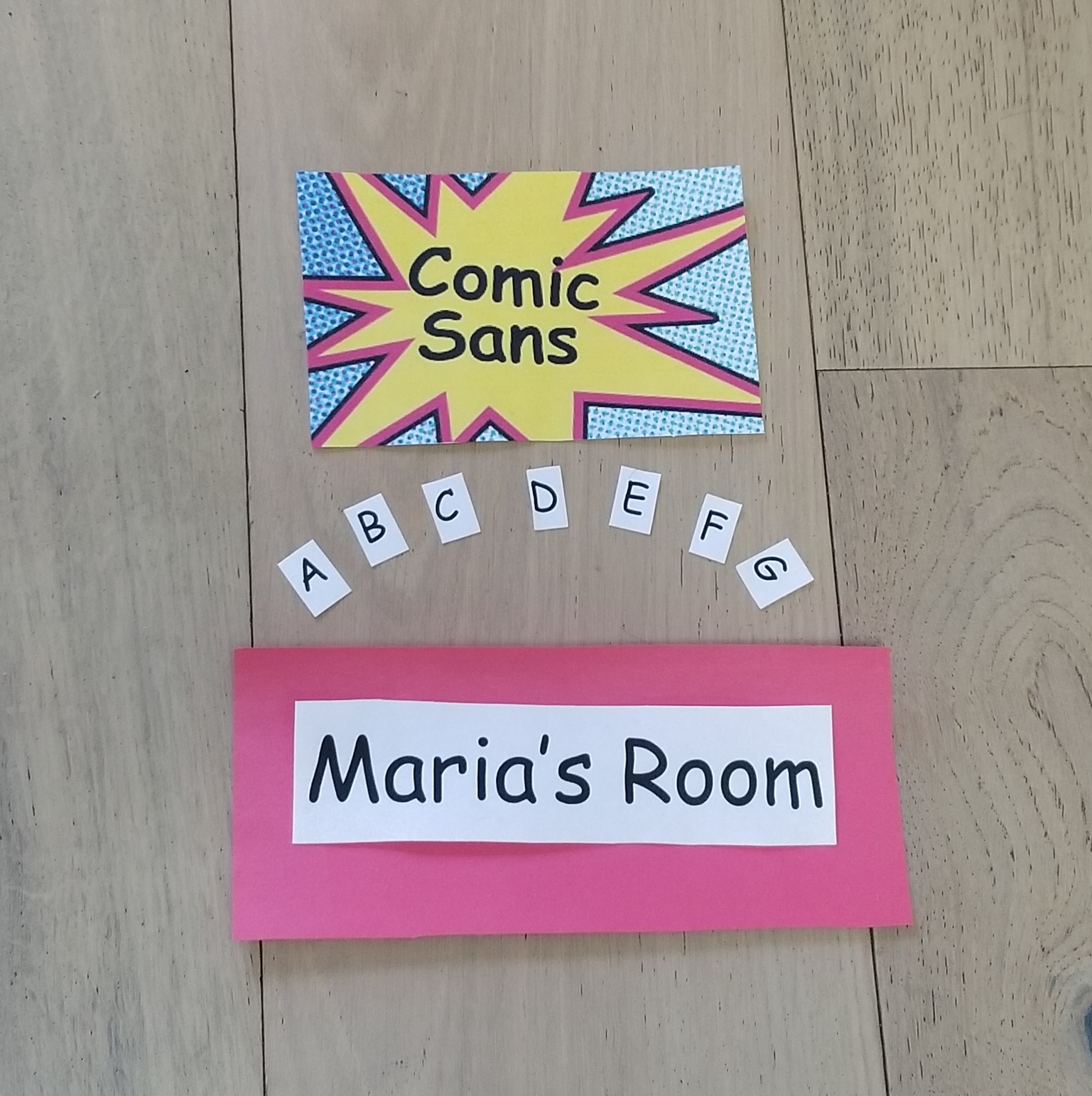
Clear Sheet Protectors/Contact Paper
Clear sheet protectors, contact paper, or self-laminating sheets are fun for preserving and displaying your child’s early drawing and writing—which encourages them to keep at it. But they’re also useful in so many other ways to encourage early literacy skills. Write letters or words on paper and stick it in your sheet protector or contact paper to create an easy alphabet tracing activity. Just give your child a dry-erase marker and let them trace onto the plastic. It will wipe off easily.
You can also print a page of letters (uppercase and/or lowercase) and go through them with your child. If they can identify the letter or the sound it makes, they get to cross it off. They circle the ones they don’t know yet. Then let them try again the next day to see if they can cross more off. As their skills progress, you can upgrade this activity to simple words. You can also use contact paper or self-laminating sheets to make a cute DIY bookmark. Simply cut out a bookmark shape from any plain or patterned paper. Let your child decorate it with markers or hole punches in cute shapes. Then stick it into the contact paper and trim the edges.
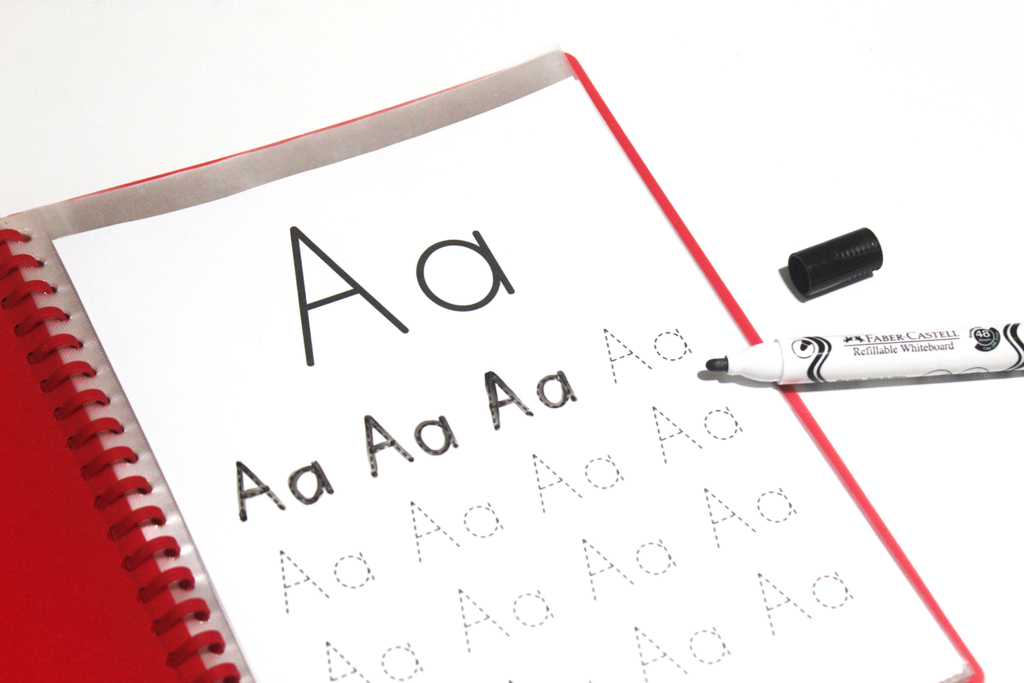
Sidewalk Chalk
Take sidewalk chalk outside or bring it along on outings to add a little reading practice to outdoor play. For example, play alphabet hopscotch at the park, write words or messages together, or encourage your child to draw pictures of words that begin with a certain letter sound. Kids love a challenge, and asking how many items they can draw that start with a given sound may spark their interest. You can even draw an alphabet bingo card on the ground and get them to see how many items they can find around the park that start with the letters on the card!
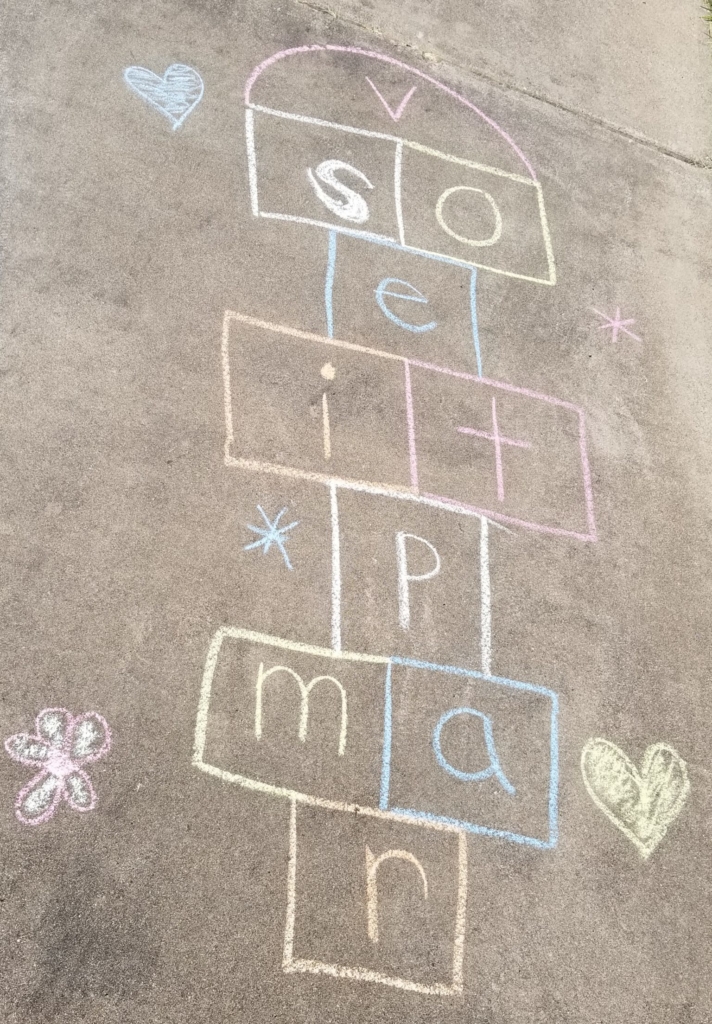
Teaching your child to read may feel daunting, but remember this: If you can believe in their ability to read, you can believe in your ability to teach.
